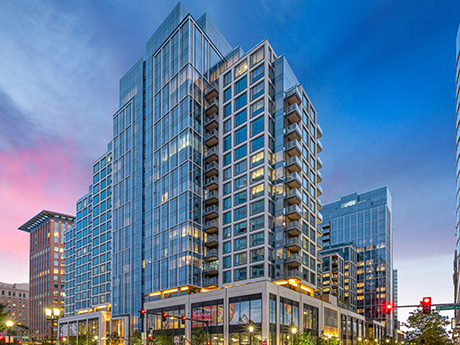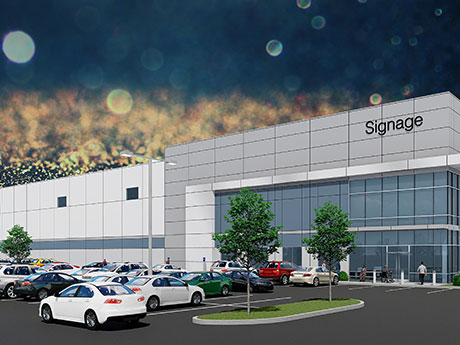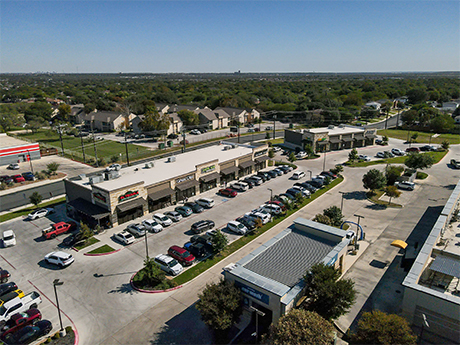By Shawn Jaenson, Senior Vice President, Industrial Specialist, Kidder Mathews The Northern Nevada industrial market is composed of 98.7 million square feet of industrial real estate spread across six submarkets. Northern Nevada’s centralized location allows for a one-day truck service to more than 60 million customers. Couple that with the fact that Nevada has no corporate tax, personal tax, inventory tax, franchise tax, or special intangible tax and the city is one of the most desirable industrial locations in the Western U.S. What was once thought of as unattainable in Northern Nevada has become the norm as nearly every record or statistic has been shattered and the market continues to show no signs of slowing. The overall market vacancy rate plummeted in 2021 to 1.7 percent, with a direct vacancy rate of 1.6 percent — a more than 200 percent decrease from the start of the year when overall vacancy rates were 5.3 percent and direct vacancy rates were 4.9 percent. Due to the unprecedented demand, new product in Northern Nevada has never been more crucial as new construction struggles to keep pace with market demand. In 2021, Northern Nevada had a positive net absorption of just over 7 million square feet, which …
Market Reports
By Becky Bedwell, vice president of development, Cottonwood Group As one of Boston’s fastest-growing and most dynamic areas, the Seaport District has gotten a lot of attention as it has undergone a multitude of transformations over the past 150 years. The area has evolved from a bustling railyard and shipping area in the early 20th century to a no-man’s land of parking lots in the 1990s to its most recent iteration: The Innovation District. While the spotlight is only growing brighter as several high-profile residential and mixed-use projects come on line in this distinctive and in-demand neighborhood, the headlines tell only part of the story. The Seaport District’s seemingly sudden emergence is the result of more than a decade of development and over $22 billion in public funding — efforts that have helped draw hundreds of new businesses and support a growing list of noteworthy developments. The challenges faced and opportunities realized by developers in this part of town reveal some important truths about what it takes to create great civic spaces and successful multifamily developments — not just in this city and this area, but in urban communities around the country. What follows are some best practices, consideration and …
By Taylor Williams From sprawling garden-style complexes in the suburbs to wrap-style construction and high-rise buildings in the urban core, multifamily properties come in many shapes and sizes. And in Texas, all of these product types are in high demand. Consequently, developers have generally seen healthy paces of rent growth over the last decade. But with each year of cyclical maturation, land becomes more scarce, construction grows more costly and more communities come on line, making the competition to secure renters increasingly stiff. On a more granular level, bidding wars for large tracts of land that can support major residential density are becoming increasingly intense with the growth of build-to-rent (BTR) development throughout Texas. Global supply chain disruption is putting relentless pressure on costs of construction materials and timelines for new projects, and leasing initiatives are getting smarter via sophisticated proptech platforms that were developed exclusively with real estate operations in mind. But these economic and operational constraints exist entirely on the supply side of the market. Simultaneously, demand for housing is accelerating unencumbered throughout Texas, a perennial medalist in population growth among the 50 states. These market factors are creating an unusual dynamic in which the forces that drive …
After national media declared traditional brick and mortar retail to possibly be on it’s “last leg” due to the COVID-19 pandemic, the Nashville area has seem quite the opposite reaction. Already in an accelerated state of demand going into the shutdown of 2020 that extended into a malaise in 2021 in many places, Nashville is seeing all indicators of the hottest retail market in its history. Prior to the pandemic, rents and occupancy were already at historic highs. 2020 began with a continuance of that trend and ended the year higher with the most active submarkets closing the year below a 5 percent vacancy rate across all retail product types as the market absorbed more than 300,000 square feet of new product. During 2021, the region experienced further good news for landlords with rents increasing at one of the fastest rates in the United States (more than 8.8 percent). This continues a trend lasting more than 10 years where regional rent growth outpaced the national average. This growth was at least partially driven by a vacancy rate at year-end of only 3.7 percent. The primary driver of these metrics continues to be population growth and a low level of retail …
By Bob Caudill, Executive Vice President, Colliers We continue to see a flight by tenants into low-rise office properties, typically four stories or less, and out of high rises. This trend began pre-pandemic, but COVID has undoubtedly accelerated its movement. Asking rates in the market have flattened, while concessions like free rent, beneficial occupancy and improvement allowances have increased. The surge in construction costs continues, putting stress on the economics of lease deals. In addition, construction material delivery delays have impacted the completion of tenant improvements. We will continue to see challenging times for office owners in the short-term as tenants are unsure how much space they need going forward. More tenants will also struggle to pay rent on time. In the long-term, although some industries have learned that they can remain successful with most of their employees working remotely, others are experiencing negative impacts on creativity and collaboration. As a result, their businesses have suffered financially, and they will require their employees to return to the office. Activity and Impact The Irvine Company’s Spectrum Terrace has set a new standard in design and quality for low-rise, Class A office properties. Tenants in this project are creating a workplace environment that employees will want …
The industrial market will be forever changed by the COVID-19 pandemic. Before the pandemic, demand for industrial space was closely tied with gross domestic product (GDP), with demand rising and falling alongside the U.S. output of goods. The pandemic has accelerated an already shifting economy to an “on-demand” economy. This shift was created by technology companies fulfilling consumer demand via the immediate provisioning of goods and services, and has now led to industrial warehouse demand being more in line with consumer spending versus GDP. Consumer spending and personal income are at all-time highs, with e-commerce sales growing exponentially throughout 2020 and 2021. Companies have been leasing warehouse space at a meteoric rate, driven by the need to store goods to accommodate the demand and mitigate risk from supply chain complications that have been brought on by the pandemic. Over the past two years, millions of square feet of warehouse space in the Chicagoland area have been leased for e-commerce use to tenants such as Walmart, Wayfair, Hello Fresh, Imperfect Foods and, of course, Amazon. Additionally, as traditional brick-and-mortar retailers transition to greater online sales, they require more warehouse space for goods storage, which has led tenants such as Target, Walmart, …
By Steve Monroe, CCIM, San Antonio market manager, Oldham Goodwin The past year has seen steady improvement in the key performance metrics of the San Antonio retail market. Two years ago, participants in the retail sector, both local and national, were understandably preoccupied with questions about how the COVID-19 pandemic would impact retailers and owners of retail properties. The shift toward online shopping had begun several years earlier, and there was great fear that the pandemic would accelerate that trend such that it would prove fatal to retailers. The economic slowdown and quarantine restrictions that were implemented during the early part of the crisis appeared to validate those concerns. However, with the widespread availability and use of vaccines during the past 12 months, the San Antonio retail market, which initially saw significant layoffs and dramatic slowdowns, has come roaring back. The move toward online buying has indeed continued apace, and some consumers have shifted toward having goods delivered to them or utilizing curbside pickup models. In spite of these changes, nimble retailers have adapted to the changing landscape, and most are now thriving. In fact, for most retailers, the biggest operational problems have nothing to do with lack of …
By Robert Skinner, Broker-Salesperson, Sierra Nevada Properties Commercial Group Back in the day, Reno had lots of land, we did not need high density development and there was little reason to build vertically. Because of the efforts of state and community leaders, as well as economic development agencies like Economic Development Agency of Western Nevada (EDAWN) and the Northern Nevada Development Authority (NNDA), many companies relocated and expanded here. With the increase in jobs came the need for more housing. The multifamily rental vacancy rate in the Reno/Sparks area is currently below 2 percent, with fewer than 50 listings for townhouses and condominiums on the Northern Nevada Multiple Listing Service (MLS). The region has absorbed 750 acres per year since 2011, according to a recent study by Woods and Poole that utilized data from the Truckee Meadows Regional Planning Agency. The study further predicts the region will run out of developable residential land by 2038. The supply shortages are increasing the price of parcels, while landowners may not sell as they hold out for higher prices. This will accelerate the shrinkage of developable residential land. To meet demand, city planners are calling for higher density and vertical multifamily development. This means we …
By Terrison Quinn, Managing Principal, SRS Real Estate Partners Despite the headwinds facing the Orange County retail property sector in 2021, retailers experienced record sales, while shopping center owners realized all-time-high property values. Orange County’s retail vacancy rate also decreased in 2021 from 4.58 percent to 4.32 percent as compared to 2020, according to CoStar. Meanwhile, rents increased from $33.12 per square foot, per year to $34.55 per square foot, per year — back to pre-pandemic levels. There are many reasons for these impressive numbers, though less stringent COVID rules and the solid job market may be two key drivers. Orange County remained less restrictive on businesses than neighboring Los Angeles County. The county also seems to have been the economic benefactor given the less severe climb out of the vacancy and unemployment challenges that were experienced through the pandemic. Orange County’s job market was hit hard during the pandemic with its large employment base in hospitality and leisure. However, it bounced back quickly with Disneyland re-opening and others hiring thousands of workers amongst robust consumer demand. Orange County’s job market is also recognized as one of the more diverse and higher paying counties in Southern California. Investors Continue to Eye Orange County as the Gold Standard …
When it comes to which office properties will succeed in the coming years, success may boil down in part to who is minding the store. Like most big cities, Chicago’s office market has been tested by the pandemic, and office property owners face a far more competitive environment. Year-end 2021 office vacancy rates were nearly 18 percent in the central business district (CBD) and over 25 percent in the suburbs, or 44 percent and 35 percent higher, respectively, than two years prior, according to NAI Hiffman research. Hybrid work is here to stay, and some employers are shrinking or shifting their office footprints. When the pandemic is finally in the rearview mirror, office demand is not going to be the same as it was a couple of years ago, although we are still figuring out just what it will be. Which office properties survive and thrive in post-pandemic Chicago and nationwide will depend on many factors, including the property’s age or condition, its location and, increasingly, how well the property is programmed and run. That includes satisfying tenants in terms of everything from air quality to event assistance; meeting lenders’ environmental, social and governance (ESG) requirements and other new demands; …










